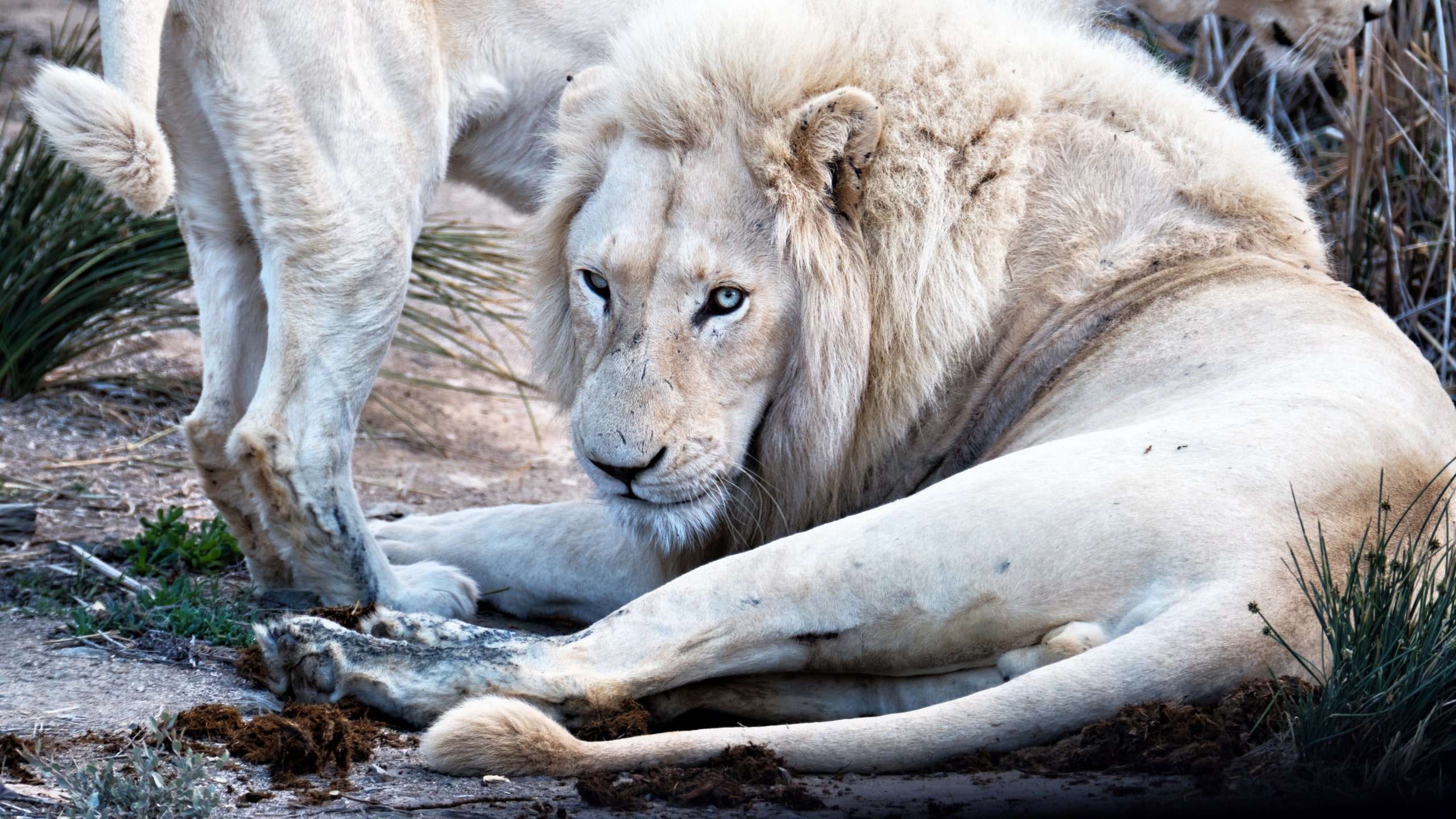Thundering along a bumpy road in a wildlife reserve in South Africa, we fly over an unforeseen clod of earth. Along with a few other things in the Land Rover, I fly out of my seat and knock my head on the ceiling. My jaw clamps down on my lip, which begins to bleed profusely, and the car is pulled to a halt. My mom leaps out and tends to my bloody face, while my sister holds back my hair. My dad starts apologizing.
Up on the ridge, about 800 feet away, a male white lion watches from above. “Look!” my dad bellows. We do, and he reciprocates, his blue eyes staring directly at us; his thick mane moving gently in the afternoon breeze.
Had we continued thundering along the bumpy road, we would’ve missed him. With only 13 white lions estimated to be left in the wild and around 300 in captivity, we were in serious luck.
Since white lions were discovered by Europeans in South Africa’s Timbavati region in 1938, they’ve typically been hunted, or caged and used for breeding. Their white fur and piercing blue eyes make them a rarity. Though endemic to the Timbavati region, they have also been introduced into other parts of South Africa, such as Sanbona Wildlife Reserve (in the Western Cape) and Pumba Private Game Reserve (in the Eastern Cape). In March of this year, the birth of a white lion born to a tawny lion in South Africa’s Kruger National Park made headlines across the globe. (Contrary to popular belief, white lions aren’t albino; tawny lions can carry the white lion gene.) Those who witnessed the frosty white cub dangling from its mother’s mouth were in luck. It’s almost as uncommon a wildlife sighting as seeing a snow leopard.
The chance to spot white lions continues to diminish. Despite being on the verge of extinction, they have never been—and still aren’t—on the endangered list, which means they have little protection against being hunted and caged. Organizations like the Global White Lion Protection Trust, created by conservationist Linda Tucker, aim to educate people and protect the lions (and provide a section for donations). But as long as awareness isn't spread and laws go unchanged, the white lion's luck will continue to run out.
I still have a scar above my lip from that game drive. Every time I run my finger over it, I’m reminded of that day; of seeing that lion on the ridge staring down at us, watching the clumsy humans below, possibly wondering how we got the upper hand in the circle of life. Knowing that these creatures are in such danger, perhaps we can now use that upper hand for something good. Because sadly, their fate can’t just be left to luck.

